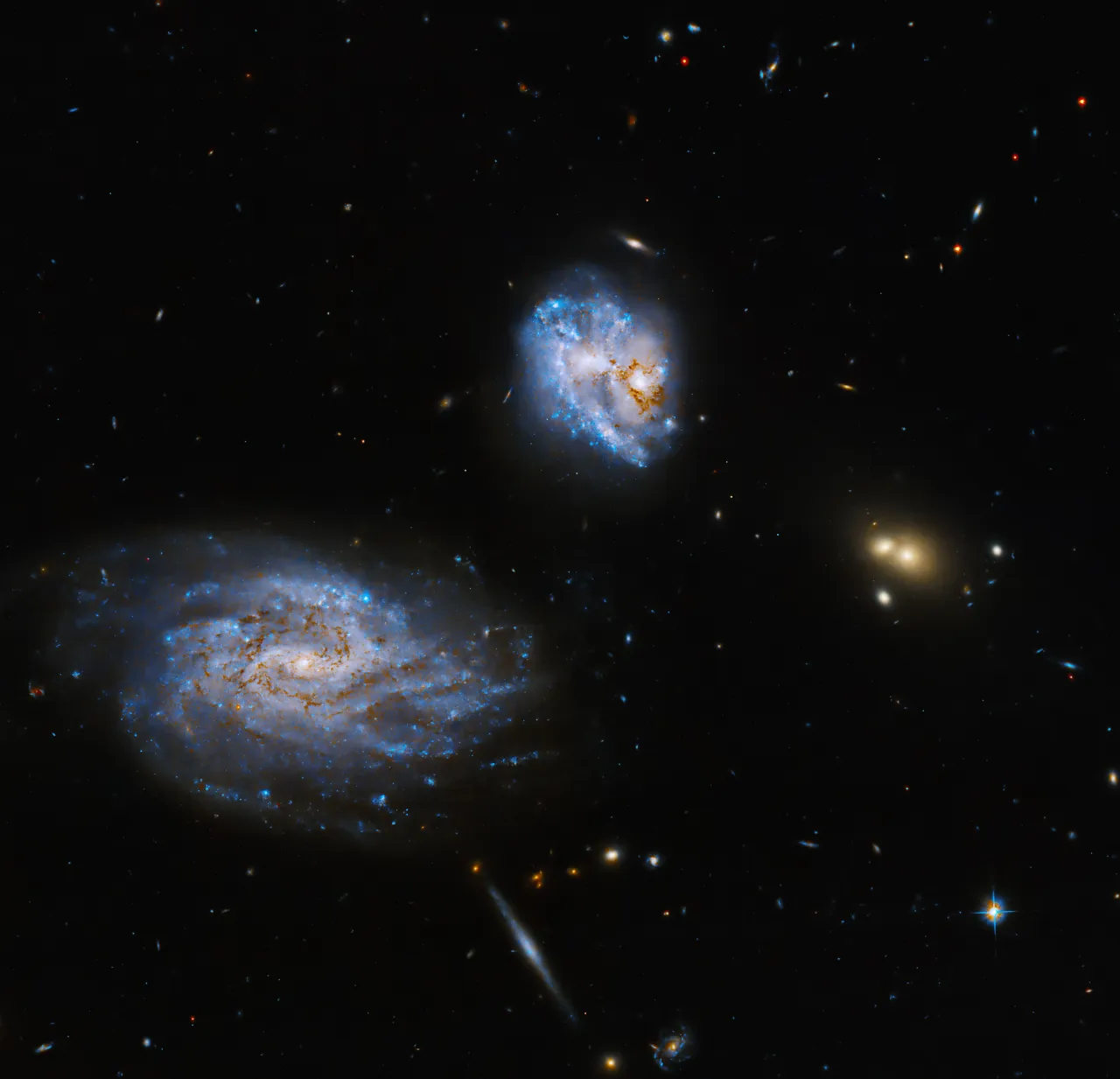Hubble observes two interacting spiral galaxies

This new NASA/ESA Hubble Space Telescope image features two spiral galaxies engaged in a gravitational dance. The galaxy pair, called Arp 300, consists of UGC 05028, the smaller face-on spiral galaxy, and UGC 05029, the larger face-on spiral galaxy.
The asymmetric and irregular structure of UGC 05028 is quite distinct in this new Hubble image. The bright knot visible to the southeast of the UGC 05028's center is likely the remnant of another small galaxy possibly in the midst of merging with UGC 05028. If confirmed, that remnant will eventually merge with the bar of stars visible in Hubble images of the galaxy, resulting in a central bulge similar to that of Arp 300's larger companion galaxy, UGC 05029.
UGC 05029 boasts a prominent spiral structure and multiple hot, blue giant stars visible on the side facing UGC 05028. The interaction between the two galaxies is likely resulting in this enhanced star formation.
The Hubble image also features another edge-on spiral galaxy lying below UGC 05029 but is too faint to be resolved into star-forming regions. The five objects arranged above it are presumed to be a cluster of distant background galaxies.
Welcome to Arp 300!These galaxies are interacting with each other, pulled closer by their mutual gravity – this spurs new star formation, seen as the bright blue regions in these spiral galaxies: https://t.co/sc7RtX7ADu#CosmicCollisions pic.twitter.com/RFHFyOPMCC
— Hubble (@NASAHubble) January 22, 2024
Hubble, a mission of international collaboration between NASA and the European Space Agency (ESA), looked at this interacting galaxy pair to study the relationship between the overall physical characteristics of galaxies and their star formation.
Galactic interactions play a crucial role in shaping cosmic landscapes. With more than 33 years in orbit and 1.5 million observations, Hubble plays a key role in capturing the essence of such events.










